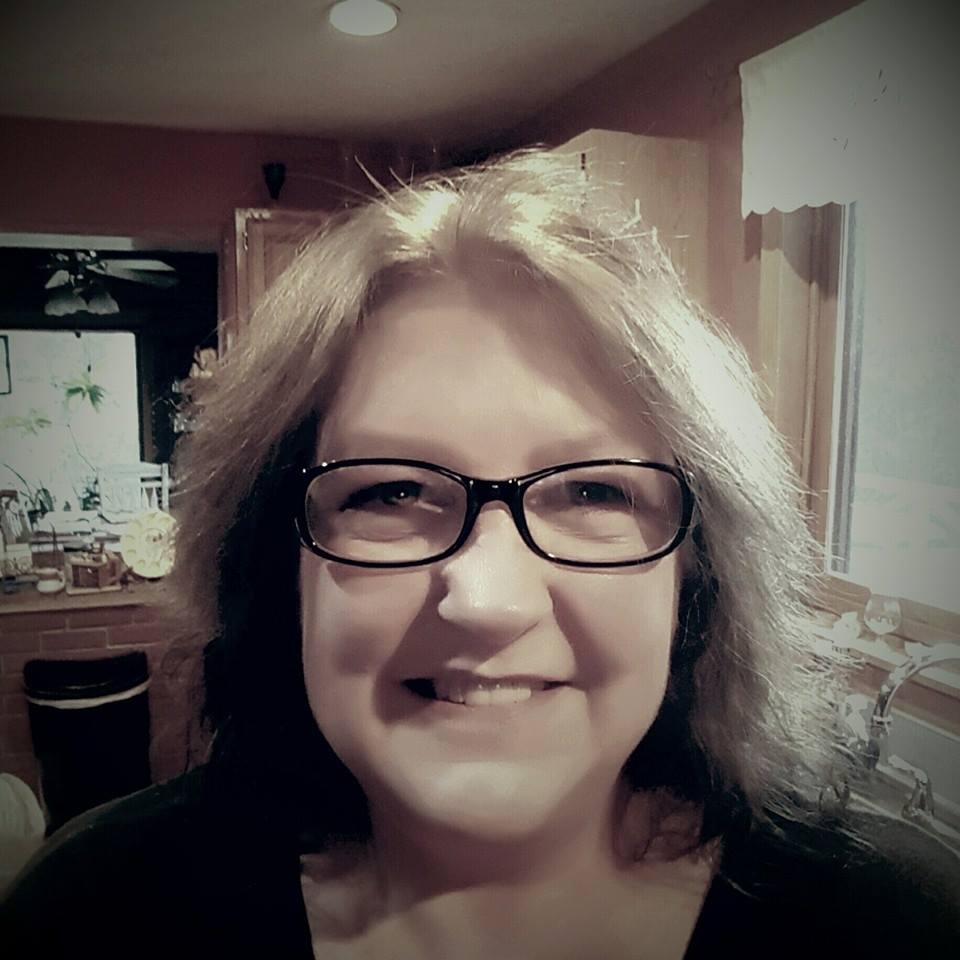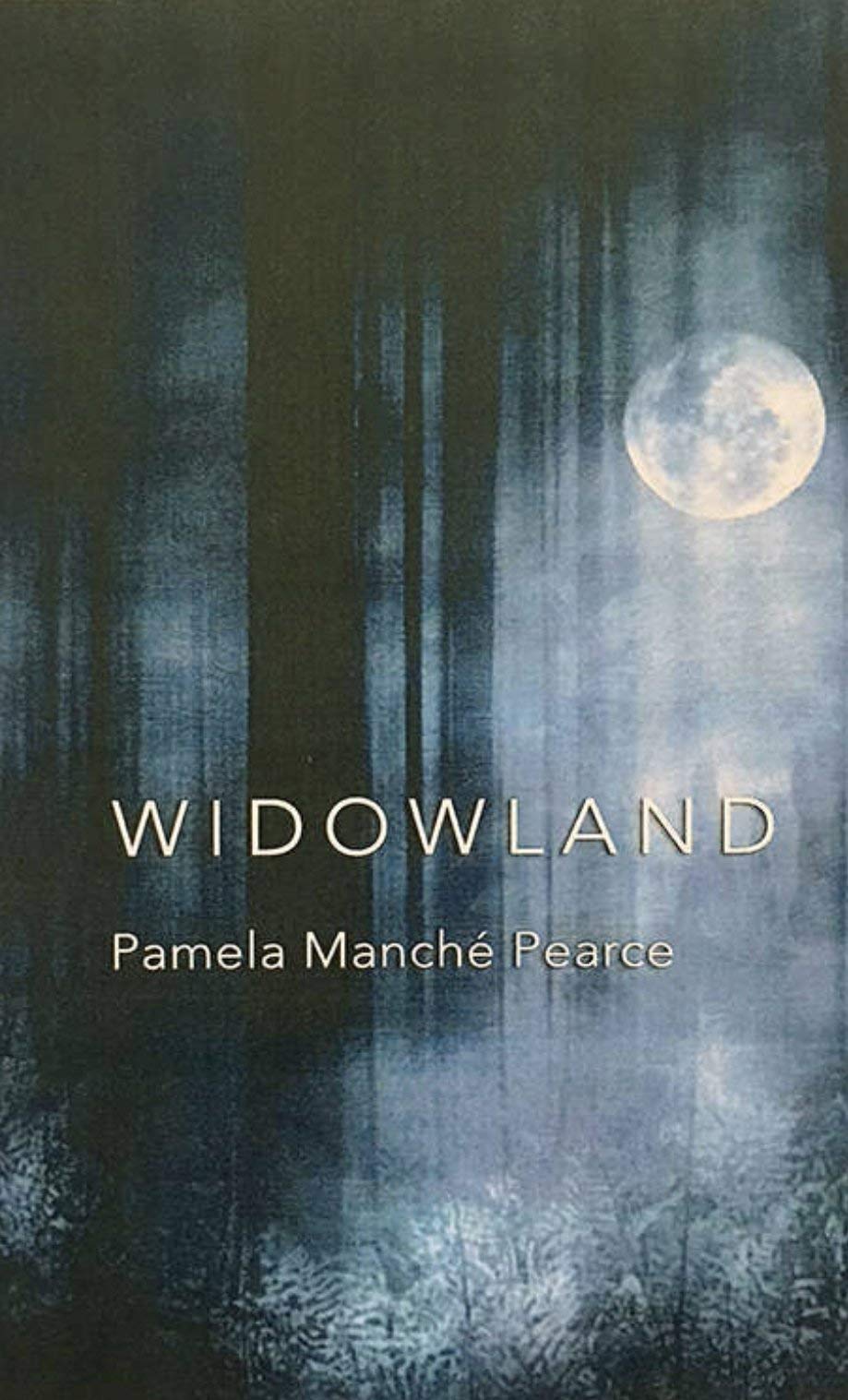ISSN: 1941-4137
POETRY THAT ENACTS THE ARTISTIC AND CREATIVE PURITY OF GLASS
POETRY THAT ENACTS THE ARTISTIC AND CREATIVE PURITY OF GLASS

Anne Graue is the author of Fig Tree in Winter (Dancing Girl Press, 2017) and has work in SWWIM Every Day, Plath Poetry Project, Rivet Journal, Into the Void, Mom Egg Review, Random Sample Review, and One Sentence Poems. Her reviews have been published in Glass: A Journal of Poetry, Whale Road Review, The Rumpus, New Pages, and Asitoughttobe.com.
September 11, 2019
Edited by Stephanie Kaylor
Edited by Stephanie Kaylor
Review of Widowland by Pamela Manché Pearce
 Widowland
by Pamela Manché Pearce
Green Bottle Press, 2018
Pamela Manché Pearce’s chapbook, Widowland (Green Bottle Press, 2018), delves into the loss of a beloved spouse and exposes the steps in the grieving process in poems that move from observance of the world to participation in it. As a shared experience, most people are familiar with the stages we go through following the death of a loved one, and we acknowledge that different people grieve in different ways, yet even with our modern sensibilities, we still don’t have a firm handle on it.
In his “A Valediction Forbidding Mourning,” John Donne implores those who have lost loved ones:
So let us melt, and make no noise,
No tear-floods, nor sigh-tempests move;
‘Twere profanation of our joys
To tell the laity our love.
declaring public expressions of emotion unseemly and urging mourners not to sully their loved ones by sharing too much of their grief with others. Treatises on grief in any genre may not help us gain a full understanding of how we process the pain of losing someone or make it any easier when in the midst of grief, however, and public decorum is not always a concern. Through art we can sometimes find solace and apply meaning to emotional turmoil in order to come out on the other side and know, like Donne, that two souls can be one, even if one leaves life before the other. Pearce’s Widowland explores these truths about loss and mourning in poems that embrace the world and the self in the wake of deep sorrow and the helplessness that accompanies it.
To some, an encounter with a red cardinal is an acknowledgement that someone has passed and is in some way representative of that spirit. The opening poem in Pearce’s chapbook, then, is an apt beginning to a collection of poems that dwell in a place called Widowland. The poem introduces an imagined cardinal in winter as “an ornament / on the barren / branches.” Imagination produces real cardinals for the speaker who proclaims “I can have / as many cardinals / as I want.” A conclave of cardinals is bestowed on the speaker as she looks out her husband’s window; this moment of winter stillness focuses on the meaning of such a gathering and on the all-consuming idea of death in addition to memories of the color red and its meanings in the speaker’s life. It sets a tone of remembrance and spirituality for the collection with stanzas such as these:
What is red?
What is red to me?
Everything that blood is.
Red is the fabric
apple stitched onto
my first-day of school
dress,
and the real one
my grandfather has
shined for my teacher.
In familiar symbols, the speaker associates red with life experience and connects emotion to nature as she looks out the winter window from her dead husband’s study.
Animals and nature play a role in a number of the poems in Pearce’s book, and they serve a multitude of poetic purposes as the poet exposes grief in all of its possible manifestations. The poem “Foxed” contains the speaker’s close observations of a dead fox in her garden and reaches back into memories of young fox kits:
they were so cute in their bright
coats and long black gloves leaping up, pouncing down
like cats but with little dog bodies all fluff and vigor.
The imagery is sufficient in presenting a glimpse of the speaker’s experience with foxes in a garden and continues through the life of one fox that she had the chance to observe again later in life. Then the poem takes a turn, and the fox becomes something greater than the imagery. The fox and the late husband merge in the voice of the poem, and a contemplation of the afterlife becomes a disquieting account encased in the memory of her husband’s burial. The poem remains in this unsettling place ending with a repeated line: “I don’t know. I know. I don’t know.” Another poem, “Stalker,” finds a place in the same disquieted space where the speaker is “old and alone with just a walker / and the stink of piss.” A dog awakens her out of a slumber where she found herself safe inside her mother until startled from her “holiday called sleep.” The poem, as well as others that incorporate the imagery of animal encounters, creates a confusion that accompanies profound grief and sorrow, a disruption of time before and after death.
Just as each poem contains a significant turn toward memory or insight, this focused collection also takes a turn toward the end, a noteworthy shift into the present and possibility. The speaker’s voice changes, she begins to smile and to listen. A TV family, fashion, and poems that look back on pain and process it from a stronger and more positive perspective bring the experiences in Widowland to a constructive place where dwelling there does not seem as bleak or as terrifying as it was at first. In a lovely piece, “I Describe My Needlework Nirvana in the Form of a Pantoum,” the widow’s voice abounds in present participles and declares,
It’s me! In the glow of those flame stitches, I’ve lost all my wan,
bargello this time, or Tunisian lace, perhaps? All good whichever I am choosing.
Hey, look at me: slip-stitching, popcorning, knotting off, and chaining on!
She refers to creativity and self in a new place, fixed more on discovery than remembrance, resolved to happiness and fond reminiscence as the grieving process settles. The final poem in Widowland is a conflagrational elegy for Alexander McQueen and reveals possibilities for living and life after death, mingling the two in a finality of feeling:
As fire licks and hisses higher,
the audience, wild,
watches us with horror and joy
as we go down together,
a jumble of seared flesh
and unstrung beads that skitter
across the burning floor.
Her husband has left with part of her. She is still present in the flames.
Visit Pamela Manché Pearce's Website
Visit Green Bottle Press' Website
Widowland
by Pamela Manché Pearce
Green Bottle Press, 2018
Pamela Manché Pearce’s chapbook, Widowland (Green Bottle Press, 2018), delves into the loss of a beloved spouse and exposes the steps in the grieving process in poems that move from observance of the world to participation in it. As a shared experience, most people are familiar with the stages we go through following the death of a loved one, and we acknowledge that different people grieve in different ways, yet even with our modern sensibilities, we still don’t have a firm handle on it.
In his “A Valediction Forbidding Mourning,” John Donne implores those who have lost loved ones:
So let us melt, and make no noise,
No tear-floods, nor sigh-tempests move;
‘Twere profanation of our joys
To tell the laity our love.
declaring public expressions of emotion unseemly and urging mourners not to sully their loved ones by sharing too much of their grief with others. Treatises on grief in any genre may not help us gain a full understanding of how we process the pain of losing someone or make it any easier when in the midst of grief, however, and public decorum is not always a concern. Through art we can sometimes find solace and apply meaning to emotional turmoil in order to come out on the other side and know, like Donne, that two souls can be one, even if one leaves life before the other. Pearce’s Widowland explores these truths about loss and mourning in poems that embrace the world and the self in the wake of deep sorrow and the helplessness that accompanies it.
To some, an encounter with a red cardinal is an acknowledgement that someone has passed and is in some way representative of that spirit. The opening poem in Pearce’s chapbook, then, is an apt beginning to a collection of poems that dwell in a place called Widowland. The poem introduces an imagined cardinal in winter as “an ornament / on the barren / branches.” Imagination produces real cardinals for the speaker who proclaims “I can have / as many cardinals / as I want.” A conclave of cardinals is bestowed on the speaker as she looks out her husband’s window; this moment of winter stillness focuses on the meaning of such a gathering and on the all-consuming idea of death in addition to memories of the color red and its meanings in the speaker’s life. It sets a tone of remembrance and spirituality for the collection with stanzas such as these:
What is red?
What is red to me?
Everything that blood is.
Red is the fabric
apple stitched onto
my first-day of school
dress,
and the real one
my grandfather has
shined for my teacher.
In familiar symbols, the speaker associates red with life experience and connects emotion to nature as she looks out the winter window from her dead husband’s study.
Animals and nature play a role in a number of the poems in Pearce’s book, and they serve a multitude of poetic purposes as the poet exposes grief in all of its possible manifestations. The poem “Foxed” contains the speaker’s close observations of a dead fox in her garden and reaches back into memories of young fox kits:
they were so cute in their bright
coats and long black gloves leaping up, pouncing down
like cats but with little dog bodies all fluff and vigor.
The imagery is sufficient in presenting a glimpse of the speaker’s experience with foxes in a garden and continues through the life of one fox that she had the chance to observe again later in life. Then the poem takes a turn, and the fox becomes something greater than the imagery. The fox and the late husband merge in the voice of the poem, and a contemplation of the afterlife becomes a disquieting account encased in the memory of her husband’s burial. The poem remains in this unsettling place ending with a repeated line: “I don’t know. I know. I don’t know.” Another poem, “Stalker,” finds a place in the same disquieted space where the speaker is “old and alone with just a walker / and the stink of piss.” A dog awakens her out of a slumber where she found herself safe inside her mother until startled from her “holiday called sleep.” The poem, as well as others that incorporate the imagery of animal encounters, creates a confusion that accompanies profound grief and sorrow, a disruption of time before and after death.
Just as each poem contains a significant turn toward memory or insight, this focused collection also takes a turn toward the end, a noteworthy shift into the present and possibility. The speaker’s voice changes, she begins to smile and to listen. A TV family, fashion, and poems that look back on pain and process it from a stronger and more positive perspective bring the experiences in Widowland to a constructive place where dwelling there does not seem as bleak or as terrifying as it was at first. In a lovely piece, “I Describe My Needlework Nirvana in the Form of a Pantoum,” the widow’s voice abounds in present participles and declares,
It’s me! In the glow of those flame stitches, I’ve lost all my wan,
bargello this time, or Tunisian lace, perhaps? All good whichever I am choosing.
Hey, look at me: slip-stitching, popcorning, knotting off, and chaining on!
She refers to creativity and self in a new place, fixed more on discovery than remembrance, resolved to happiness and fond reminiscence as the grieving process settles. The final poem in Widowland is a conflagrational elegy for Alexander McQueen and reveals possibilities for living and life after death, mingling the two in a finality of feeling:
As fire licks and hisses higher,
the audience, wild,
watches us with horror and joy
as we go down together,
a jumble of seared flesh
and unstrung beads that skitter
across the burning floor.
Her husband has left with part of her. She is still present in the flames.
Visit Pamela Manché Pearce's Website
Visit Green Bottle Press' Website
Glass: A Journal of Poetry is published monthly by Glass Poetry Press.
All contents © the author.
All contents © the author.





